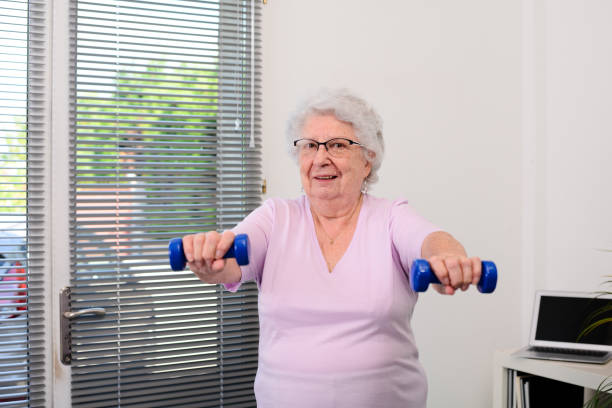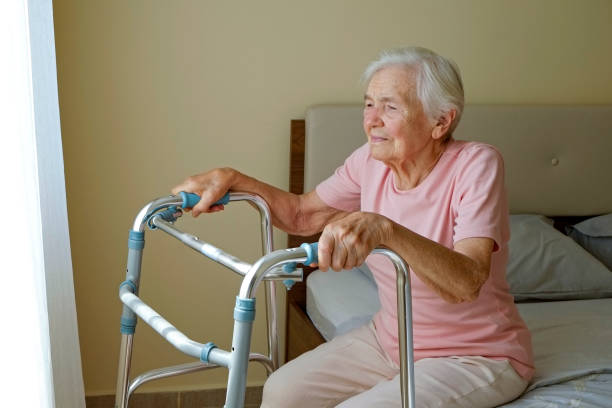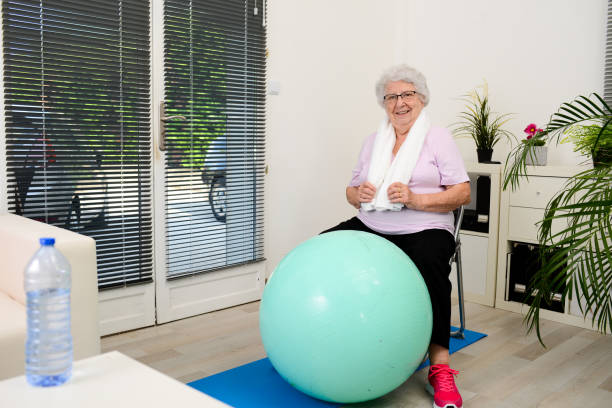Introduction

Do you know someone with Parkinson's disease? If so, you know firsthand how challenging the condition can be. Commonly experienced symptoms include movement-related issues such as tremors and difficulty walking, which can cause mobility problems.
However, while there is no cure for this neurological disorder, regular exercise is a powerful tool for managing many common symptoms. With that in mind, let's explore how regular exercise can help those with Parkinson's Disease better manage their daily life challenges.
Understanding Parkinson's Disease and its Symptoms
This refers to the condition wherein a person experiences brain changes or loss of nerve cells, which is caused by a combination of genetic and environmental factors. Common symptoms of Parkinson's include tremors, limb stiffness, difficulty walking or standing, and problems with speech, balance, and coordination.
How regular exercise can help manage the symptoms of Parkinson's disease
Regular exercise helps to improve the motor skills of people with Parkinson's disease. It has been shown to reduce tremors and help maintain balance, walking speed, and coordination. Research has also demonstrated that physical activity can improve posture, flexibility, and range of motion in people with Parkinson's disease.
Exercise can also help manage fatigue and muscle stiffness by increasing circulation and strengthening muscles. People with Parkinson's disease who exercise regularly report improved quality of life, better sleep, enhanced mood, and higher overall energy levels.
Regular aerobic activity can also help to improve respiratory function, reduce stress and anxiety, boost cognitive abilities, and enhance social interaction. Additionally, regular physical activity may delay the onset of some of the more disabling symptoms of Parkinson's disease and slow the condition's progression.
By focusing on balance, coordination, and endurance, exercise can help people with Parkinson's disease maintain their independence for longer. It can also help improve overall health as well as physical functioning. Exercise is an important part of a comprehensive treatment program for Parkinson's disease and can be beneficial in managing its symptoms.
Advantages of Regular Exercise for People with Parkinson's
Exercise can help manage the symptoms of Parkinson's disease and improve overall health. Regular physical activity is beneficial in improving mobility, muscle strength, balance, and coordination, as well as reducing fatigue. Additionally, exercise can help people with Parkinson's gain more control over their body movements and may even slow down the progression of the disease.
Studies have found that exercise is particularly helpful in improving walking and agility and reducing falls. Regular aerobic activity can also help reduce stiffness in your legs, making it easier to move around. Studies have shown that people who do regular physical activity see an improvement in their motor symptoms, including posture, gait, tremors, and agility.
Exercise can also improve mood, reduce stress, and increase overall well-being in people with Parkinson's. It helps improve sleep quality, reduce depression and anxiety levels, as well as helping to combat fatigue. Regular physical activity can also boost energy levels which helps you stay active for longer.
In addition to improving many physical and mental symptoms of Parkinson's, exercise can help you maintain your independence. It can enable people with mobility problems to stay active and independent for longer.
Overall, regular exercise can significantly improve the quality of life for people with Parkinson's disease. Before beginning any exercise program, you must consult your doctor and a physical therapist to verify that the activities you plan to undertake are safe and appropriate. With careful planning, physical activity can be enjoyable and beneficial for people with Parkinson's.
Improved Balance and Coordination
Balance and coordination can be affected by Parkinson's disease. Regular exercise can help people with Parkinson's improve their balance and coordination, reduce falls, and gain more control over their body movements. According to research, people who exercise regularly have a reduced risk of falling compared to those who don't involve themselves in any physical activity.
The key is to find activities that target both balance and coordination. These can range from Tai Chi to dancing or walking and various strength exercises. It is important to find an activity that you enjoy so that it will be easier to stay motivated and keep doing it regularly. Working out with a partner or in a group also helps boost your motivation.
Reduced Stiffness and Tremors
Exercises that target the muscles can help reduce stiffness, making it easier to move around. Studies have found that exercise also helps reduce tremors in people with Parkinson's. Strength training and stretching activities may be particularly beneficial as they help improve movement and flexibility.
In addition to physical exercises, relaxation techniques such as yoga, tai chi, and meditation can help reduce stiffness and tremors. These activities also help to improve concentration, which may be affected by Parkinson's disease.
Overall, regular exercise is important for people with Parkinson's disease. It can help manage symptoms, maintain independence and boost overall well-being. Talk to your doctor or physical therapist before starting any exercise program to ensure that your activities are safe and suitable for you. With careful planning, physical activity can be a great way to improve your quality of life.
Improved Strength and Mobility

Exercise is key to maintaining strength and mobility for people with Parkinson's disease. Research has shown frequent physical activity can enhance muscle strength and preserve joint flexibility. This helps reduce the risk of falls and enables people with mobility problems to stay active and independent for longer.
Strength training activities, such as weight lifting or resistance band exercises, are a great way to increase muscle strength and improve mobility. Walking, jogging, and cycling can also help with mobility and balance.
Regular exercise is essential for people with Parkinson's disease to maintain independence, reduce stiffness and tremors, improve balance and coordination, and manage symptoms. With careful planning and the right exercises, physical activity can greatly improve your quality of life.
Types of Exercise for People with Parkinson's
Here are some Types of Exercise for People with Parkinson's included:
Aerobics & Cardio Exercises
Aerobic exercises, such as walking, jogging, cycling, and swimming, improve cardiovascular health. They also help to increase your mobility and flexibility. Aim to do some aerobic exercise on most days of the week.
Strength Training Exercises
Strength training helps to build muscle strength, improve balance, and increase your overall functional abilities. Exercises such as lifting weights or using resistance bands can provide great benefits. Before starting a strength program, it is recommended that you seek the advice of a physical therapist.
Stretching Exercises
Stretching exercises are important for people with Parkinson's to maintain flexibility and mobility. Doing stretching exercises daily or several times a week is recommended, as they help improve posture, reduce pain, and prevent joint stiffness.
Balance & Coordination Exercises
Tai Chi or yoga exercises concentrating on balance and coordination can enhance your posture, walking steadiness, and overall flexibility. These exercises are especially important for people with Parkinson's as they can help to prevent falls.
Yoga & Stretching Exercises
Yoga can improve flexibility, balance, and coordination. It can also help reduce stress, anxiety, and depression. It is important to find a class that is suitable for people with Parkinson's, as poses may need to be modified.
Regular exercise has been proven to help manage the symptoms of Parkinson's disease, including stiffness, balance issues, and difficulty with coordination. You can maintain your mobility, flexibility, and overall well-being by combining aerobic exercises, strength training, stretching, and balance/coordination exercises. Consult your physician or physical therapists to find the best exercise program for you. With the right plan, you can experience the many benefits of regular exercise for Parkinson's.
Tips for Getting Started with an Exercise Routine

Regular exercise is essential for managing the symptoms of Parkinson's disease. It can improve mobility, strength, balance, and flexibility and reduce stress and anxiety.
To begin an exercise routine, you can follow these helpful tips:
-
Consult your physician or a physical therapist first to determine what exercise would best suit you.
-
Begin your exercise routine slowly and gradually increase the intensity as you become stronger and more capable.
-
A combination of aerobic, stretching, and strength training exercises is ideal.
-
Incorporate activities that move all parts of your body in varying directions to help maintain balance and prevent falls.
-
Exercise with a partner or in groups to help motivate and encourage you.
-
Set realistic goals for yourself and keep track of your progress.
-
Warm up before exercising, cool down afterward, and stay hydrated throughout the workout.
-
Mix it up: try different activities to avoid getting bored with one type of exercise.
-
Most importantly, have fun and enjoy the benefits of exercising!
How does exercise help Parkinson's symptoms?
Exercise has been widely studied as a way to help manage the symptoms of Parkinson's disease. Regular physical activity can help improve coordination, strength, balance, and flexibility. Exercise can also help people with Parkinson's feel less tired, reduce pain, strengthen muscles, and even slow the progression of some motor symptoms.
One of the main benefits of exercise for Parkinson's patients is improved balance. Maintaining balance is essential for many daily activities, and exercises such as tai chi, yoga, or Pilates are particularly helpful in this respect.
Strength training can play an important role in helping people with PD manage their symptoms by improving muscle strength and coordination. Regular stretching exercises can also help improve range of motion, flexibility, posture, and gait.
FAQ's
Does exercise reduce Parkinson's symptoms?
Yes, regular exercise can reduce the symptoms of Parkinson's. Exercise can help improve coordination, strength, balance, and flexibility. It can also help people with Parkinson's feel less tired, reduce pain, strengthen muscles, and even slow the progression of some motor symptoms.
What and how can physical activity prevent a decline in function on Parkinson's disease?
Regular physical activity can help people with Parkinson's maintain mobility, flexibility, and overall well-being. Exercise can also improve coordination, strength, balance, and flexibility. It can also help reduce stress, anxiety, and depression. Consult your physician or physical therapist to find the best exercise program for you.
How much exercise is needed for Parkinson's disease?
The amount of exercise needed to manage the symptoms of Parkinson's disease will depend on individual factors such as age, overall health, and severity of symptoms. To ensure that your exercise routine suits you, it is crucial to seek advice from your doctor or physical therapist.
What is mental exercise for Parkinson's?
Mental exercise for Parkinson's disease includes problem-solving and word and crossword puzzles. These activities can help improve memory and cognitive function in people with PD. It is important to consult with your physician or physical therapist to find an appropriate mental exercise program for you.
What exercises reduce rigidity?
Exercise programs that help reduce rigidity include stretching, yoga, tai chi, and Pilates. These activities can help improve coordination, flexibility, and balance in people with PD. It is important to consult with your physician or physical therapist to find an appropriate exercise program for you.
Conclusion
In conclusion, regular exercise is an important part of managing the symptoms of Parkinson's disease. Exercise can help improve coordination, strength, balance, and flexibility. It can also reduce pain, fatigue, stress, and anxiety. Consult your physician or physical therapist for an appropriate exercise program tailored to your needs. Regular exercise can help you manage the symptoms of PD and lead to a healthier and more active lifestyle.

